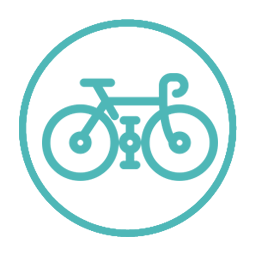Lesson Plans for Grade 7 and 8
The grade 7 and 8 lesson plans incorporate technology and its distracting effects in all modes of transportation. These lessons have classroom, gym and outdoor activities that can be adapted for the settings available to you.
While students are not yet driving, one of the lessons highlights distractions that impact non-drivers too, whether they are walking, cycling, blading or boarding. Rubrics for evaluation are available for each lesson plan.
Teaching and learning strategies
- Include a range of cooperative and collaborative learning strategies addressing differentiated instruction and multiple intelligences, and appreciate and build upon student differences in group and whole-class activities. Be flexible in terms of instructional approaches, groupings and resources.
- Allow for co-construction of meaning and exploration of a variety of perspectives, focusing on open-ended questions that engage all learners in higher-order thinking. Developing and using problem-solving skills through describing, analyzing, integrating, comparing and explaining.
- Develop a conceptual and deep understanding of key teachings through making connections, reorganizing information, and critical thinking. Communicate and think through the processes of speaking, listening, reading, writing, viewing and representing.
- Address adolescent literacy development and challenges while reflecting a thoughtful and coherent use of literacy and learning strategies. Engage in the stance of critical literacy that compels social action.
- Encourage a diversity of perspectives by helping students to reshape and reframe their thinking through collaborative learning activities. Work towards building inclusive, collaborative communities.
- Provide scaffold support to help each student grow beyond his or her current level of achievement, while gradually releasing responsibility to the student to help foster individual learning. Coach and provide descriptive feedback to small groups of students or individual students during activities.
- Facilitate student participation in cooperative learning towards social, emotional and academic success.
Cross-curricular linkages
- Develop an obstacle course using road signs as stations where students perform a certain exercise.
- Research the potential speed of each method of transportation, then create a graph comparing the various speeds.
- Read, interpret and draw conclusions about road safety from primary data presented in charts, tables and graphs.
- Collect and organize data to make convincing arguments about road safety.
- Write a letter to the Member of Provincial Parliament in your area requesting stricter penalties for road safety violations.
- Compare and contrast the development of the automobile and bicycle industries and linkages to road safety.
- Study the development of road safety signs in various continents. Using a graphic organizer, identify the similarities and differences each continent might have.

Find School Activities for your students’ Grade level and engage your school in road safety-related initiatives.

See the Community Engagement Kit for more ideas, tools and tips to bring together the community for a road safety event.

See Adaptation Tips for a list of tips and aspects to consider when adapting these activities to fit your class needs.




